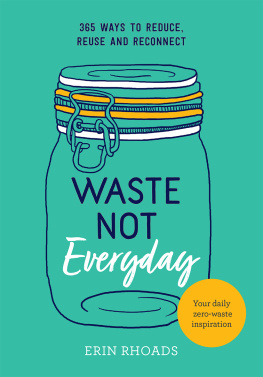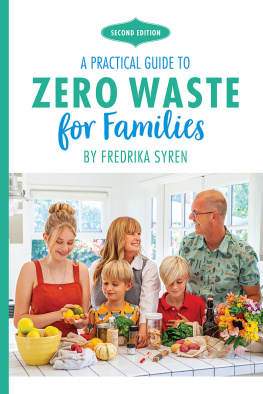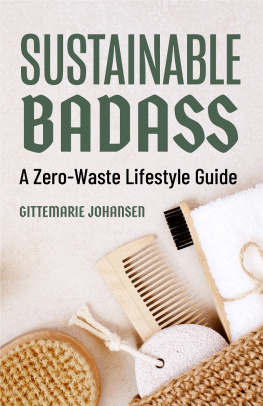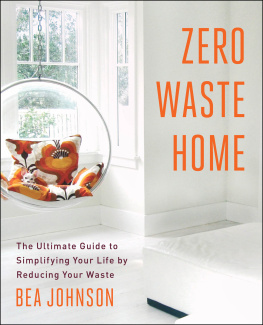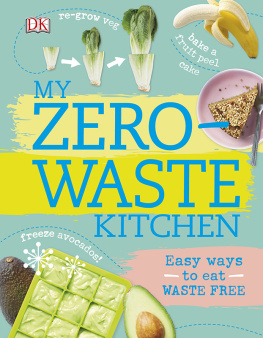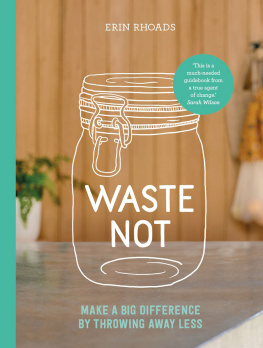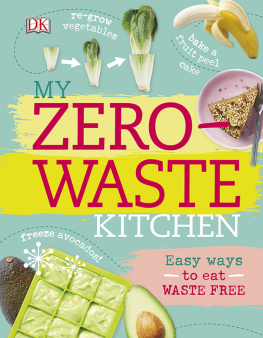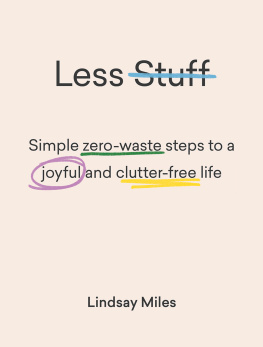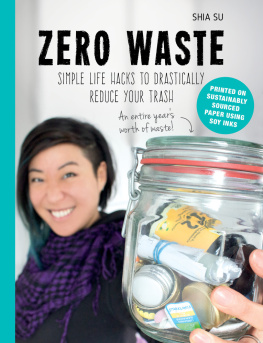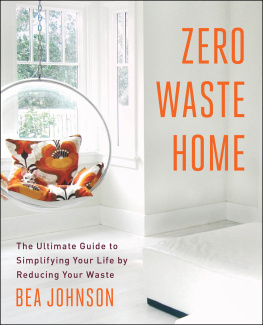Table of Contents
During the past eight years I have watched the zero-waste lifestyle become an increasingly popular movement. Unlike environmental initiatives like carbon taxes, which cant be measured by the everyday person, the changes we make by choosing to live a zero-waste lifestyle are easily visualised and measured. For example, its easy and rewarding to see the results of our choices as we watch the contents of our bins and even our recycling bins decrease dramatically.
Waste Not Everyday has 365 steps to help you not only reduce what goes into your bin but to rethink how our modern-day systems can change if we learn to alter our choices. You dont need to tick off every single tip instantly or within a year. Do what you can you might even realise you are already doing most of it. We can all make a change, and these changes dont have to be overwhelming. Its my belief that we can all try to do something to be kinder, live with more intention and take responsibility for our actions, so future generations are not left to clean up after us.
These tips come from my own zero-waste lifestyle also called a minimal-waste or low-waste lifestyle where my aim is to send as little to landfill as possible, both in my personal life and by calling on larger businesses to change their practices. There are knock-on effects of this lifestyle that include eating healthier food, reducing exposure to harmful chemicals, saving money, supporting your local community, slowing down your pace of life, and questioning everything youve been told is necessary. As a result, youll feel freer and less like you have to keep up with the Joneses. I view embarking on a zero-waste lifestyle as a response to the many problems that are harming the planets ecosystems and affecting our own health.
While Waste Not Everyday has tips about reusing or saying no to single-use plastics, its about so much more. Underneath these choices is a call to reconnect to our place within the world to pause and take a breath. Its part of a much-needed shift we as humankind need to take collectively. Our choices in the past have shaped the world but we have the ability to reshape it into a place where kindness reigns.
Where can you and I begin to be the change we want to see in the world?
My advice is to look at your rubbish. Reducing what we place into our rubbish and recycling bins has a big impact that can help fight climate change, reduce plastic, combat fast fashion and reduce pollution, among a myriad of other issues that are caused by our consumption. At the heart of all of our environmental issues is our consumption. By wasting less, we buy less and end up making less.
Join me and countless others on the journey to stand up for our environment. Lets preserve it for the future and treat everyone with kindness.
Lets start the change.
The people who make the biggest difference are the ones who do the little things consistently. Katrina Mayer
Our bins hold a collection of wasted resources that are tipped into large fuel-guzzling trucks to then be buried in vast pits: a gift for the next generation to clean up.
And its not only the contents of our bins that are wasteful. There is so much more wastefulness that happens before we end up throwing something into our bins:
- mining new materials to make new stuff
- burning coal and gas to manufacture new stuff and to power the lights, heating and air conditioning in the factories that make the new stuff
- draining rivers and lakes for manufacturing goods and growing crops like cotton
- producing stuff in countries with lax labour laws, exploiting workers who are not paid properly or whose safety is not considered
- creating pollution and toxic run-off
- burning oil to transport everything around the world.
This is just some of the waste you and I dont see but it has the biggest impact. A simple action we can take, like reusing instead of buying new, will help curb this upstream wastefulness.
Your zero-waste lifestyle can follow a framework that can help with decision-making, especially when youre new to this way of thinking. My own personal Waste Not framework includes these steps:
- redesign
- rethink
- refuse
- reduce
- reuse
- share
- repair
- compost
- recycle
- choose kindness
- be the change.
Youll note that recycling is towards the end. This is because the act of recycling is not the way to fix the problem: instead it simply delays items, especially plastics, from ending up in landfill. Recycling doesnt do anything to tackle the real problem our wasteful consumption. To learn more about why recycling is not the solution you can read my book Waste Not: Make a Big Difference by Throwing Away Less. One of the goals of zero waste is to recycle less too!
To reduce our waste, we have to know what we are throwing into these bins. Sustainability Victoria collated information about the contents of garbage bins of everyday people in my home state and, from the illustration on the next page, you can see what we are throwing away. A peek at similar reports across Australia, the UK and the USA will show that the contents of our bins are similar! Youll see we are still putting recyclables, especially food packaging, into our garbage stream too.
A bin audit will help you see what ends up in your personal households rubbish. For this exercise, I suggest splitting recyclables into plastics and other packaging so that you can see how much single-use plastic you throw away.
There are two ways to carry out your own bin audit:
- Find a piece of paper to reuse (by writing on the back) or create an on-screen document and divide it into four sections. Label the sections with these headings: edible food and scraps, plastics (plastic food packaging, bottles, toiletries, etc.), other packaging, and other. Before putting anything into your bin, write the item on the list. Over two weeks youll quickly see themes emerge. You can do this with your recycling bin too, once youve got your landfill bin pared down.
- Find a large area and lay down a tarp (if you dont have one, borrow from a neighbour, family or friends). Tip out the contents of your bin onto the tarp the day of bin night and begin sorting into four separate piles: edible food and scraps, plastics (plastic food packaging, bottles, toiletries, etc.), other packaging, and other. Youll need gloves and tongs to help you sort through everything. Write down the items found in each section.
Keep a copy of your bin audit and reduce your waste with the tips in each part of this book. The first three parts target those three core categories of household waste: food and organics, recylables and other materials. The last part offers tips on how to reduce waste beyond whats in your bin.

